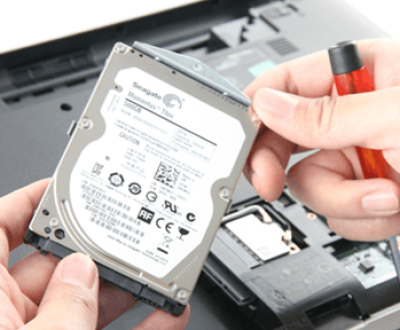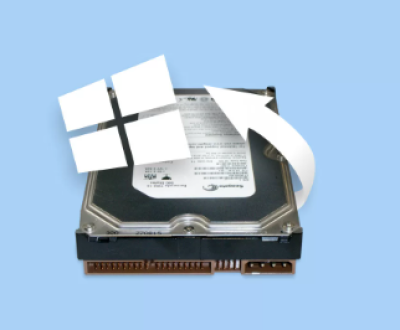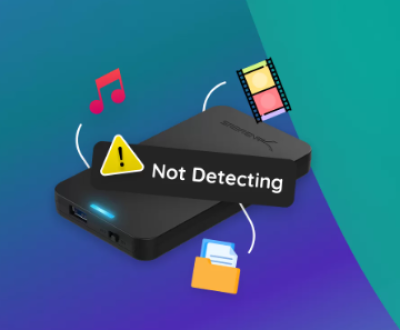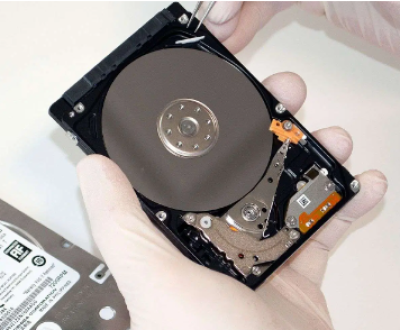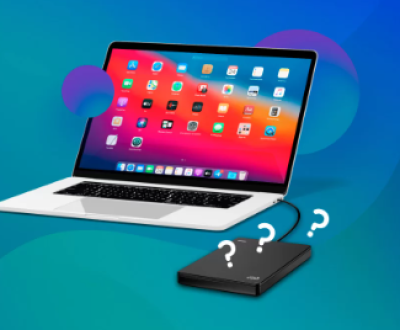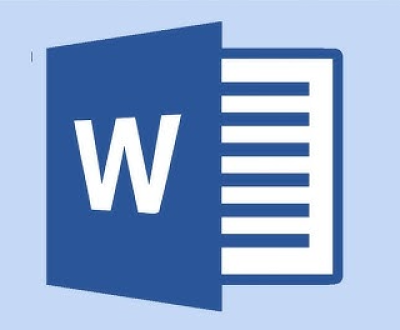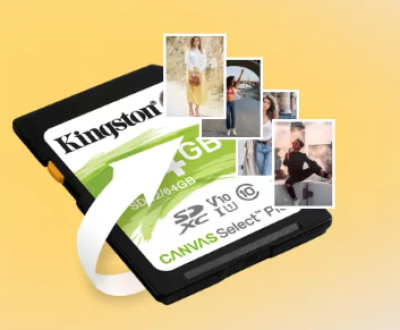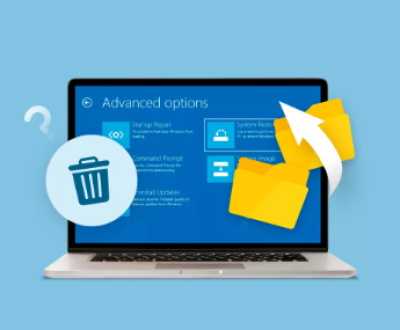Formatting a USB flash drive to NTFS can be useful when you need to store large files or require better performance and security. NTFS (New Technology File System) is a high-performance file system designed by Microsoft for Windows. Unlike FAT32. NTFS supports larger file sizes, better security features, and more robust error recovery mechanisms.
1. What is NTFS?
NTFS (New Technology File System) is the default file system used by modern versions of Microsoft Windows. It was first introduced with Windows NT in 1993 and has become the standard file system for Windows operating systems. NTFS is known for its reliability, high performance, and advanced features compared to older file systems such as FAT32 or exFAT.

NTFS offers a number of features that make it a popular choice for hard drives, USB flash drives, and other storage devices. These features include:
Support for larger file sizes: NTFS can handle individual file sizes greater than 4GB, unlike FAT32. which is limited to 4GB per file.
File compression: NTFS supports file compression, which can help you save space on your USB drive.
Security: NTFS allows file-level security through Access Control Lists (ACLs), enabling you to restrict access to files and folders based on user permissions.
Reliability: NTFS has built-in error recovery, ensuring that your data is not lost or corrupted during a system crash or unexpected shutdown.
Journaling: NTFS keeps track of changes to files, which helps recover data after a failure.
2. Why Use NTFS for a USB Flash Drive?
You may wonder why you should choose NTFS for your USB flash drive over other file systems like FAT32 or exFAT. While NTFS is not always necessary for casual users, it does offer several advantages, especially if you need the following:
1. Storing Large Files:
NTFS is ideal if you need to store large files. If your flash drive contains video files, disk images, or other large content over 4GB, NTFS is the best option. FAT32. by comparison, has a 4GB file size limit.
2. Better Performance:
For large-scale file transfers, NTFS can provide better read and write performance than FAT32 or exFAT. It also has enhanced disk space management capabilities.
3. Enhanced Security:
If you need to secure your data on the USB drive, NTFS allows you to set permissions for individual files and folders. This is especially useful for keeping sensitive information safe.
4. Error Recovery and Data Integrity:
NTFS can recover from certain types of errors more effectively than FAT32 or exFAT. If the system crashes or the drive becomes improperly ejected, NTFS’s journaling feature can help restore lost data.
5. Support for Windows Features:
NTFS is more compatible with advanced features like file compression, disk quotas, and encryption (via BitLocker), which are exclusive to Windows.
3. Requirements for NTFS Formatting
Before you format your USB flash drive to NTFS, there are a few things you should consider:
File Size: Ensure your flash drive has enough space for the files you intend to store. A minimum of 8GB is recommended for NTFS formatting, though it can work with smaller sizes.
Operating System Compatibility: NTFS is fully supported by Windows, but it is not natively supported by macOS or Linux. If you need to use the USB drive with a Mac or Linux system, you may need additional software or convert it to a more compatible file system (like exFAT).
Backup Data: Formatting a USB drive will erase all existing data on it. Be sure to back up your files before proceeding.
Windows Operating System: While this guide focuses on Windows, macOS and Linux have different methods of formatting drives to NTFS, typically requiring third-party software.
4. Advantages and Disadvantages of NTFS
Advantages of NTFS:
No File Size Limitation: NTFS can handle large files, well beyond the 4GB file size limitation of FAT32.
Better Security: NTFS allows for file and folder permissions and encryption, adding a layer of security.
Error Recovery: With its journaling system, NTFS can recover from certain types of disk errors that other file systems cannot.
Advanced Features: NTFS supports file compression, hard links, and disk quotas, which are not available in FAT32 or exFAT.
Disadvantages of NTFS:
Compatibility: NTFS is not natively supported by macOS and Linux. For full compatibility, you may need third-party software on these systems.
Overhead: NTFS has more overhead compared to FAT32 or exFAT due to its advanced features.
Slower Performance on Small Devices: On devices with limited storage capacity, NTFS might have a slight performance disadvantage compared to exFAT.
5. Step-by-Step Guide: How to Format a USB Flash Drive to NTFS on Windows
Now that we understand the benefits of NTFS, let’s walk through the process of formatting a USB flash drive to NTFS.
6. Formatting with Disk Management
Disk Management is a built-in Windows tool that allows you to manage drives and partitions on your computer.
Step-by-Step Instructions:
Insert the USB Drive: Plug your USB flash drive into the computer’s USB port.
Open Disk Management:
Press Windows + X to open the Power User menu.
Select Disk Management from the list.
Locate Your USB Drive: In the Disk Management window, you will see a list of all connected drives. Locate your USB flash drive by its size and label.
Right-click the Drive: Right-click on your USB drive and select Format from the context menu.
Choose NTFS as the File System: In the Format dialog box, under the File System drop-down, select NTFS.
Set Allocation Unit Size: Leave the allocation unit size set to Default unless you have specific needs.
Name the Drive: Under Volume Label, give your drive a name (optional).
Quick Format: Check the Quick Format box if you want to format the drive quickly. Uncheck it if you want to perform a full format (which will take longer but check the drive for errors).
Start Formatting: Click OK and then OK again to confirm. The formatting process will begin and can take a few minutes.
Once the process is complete, your USB drive will be formatted to NTFS.
7. Formatting Using Command Prompt
If you prefer using the command line or need more advanced options, you can use the Command Prompt to format your USB drive.
Step-by-Step Instructions:
Open Command Prompt as Administrator:
Press Windows + S and search for cmd.
Right-click on Command Prompt and select Run as Administrator.
Type Diskpart: Type diskpart and press Enter. This opens the disk partition tool.
List Available Disks: Type list disk and press Enter to display all connected disks.
Select Your USB Drive: Identify your USB drive by its size. Type select disk X (replace X with the number corresponding to your USB drive) and press Enter.
Clean the Drive: To remove any existing partitions, type clean and press Enter.
Create a New Partition: Type create partition primary and press Enter.
Select the New Partition: Type select partition 1 and press Enter.
Format the Drive: Type format fs=ntfs and press Enter.
Assign a Drive Letter: Type assign to assign a drive letter to your USB drive.
Exit: Type exit to close Diskpart, then close Command Prompt.
About us and this blog
Panda Assistant is built on the latest data recovery algorithms, ensuring that no file is too damaged, too lost, or too corrupted to be recovered.
Request a free quote
We believe that data recovery shouldn’t be a daunting task. That’s why we’ve designed Panda Assistant to be as easy to use as it is powerful. With a few clicks, you can initiate a scan, preview recoverable files, and restore your data all within a matter of minutes.
Subscribe to our newsletter!
More from our blog
See all postsRecent Posts
- How to recover data from portable hard drive 2025-07-10
- How to recover data from a broken hard drive 2025-07-10
- How do i recover files from a formatted hard drive 2025-07-10

 Try lt Free
Try lt Free Recovery success rate of up to
Recovery success rate of up to

